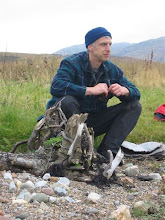


I trod on an adder on Wednesday, not the one in the picture but a smart, freshly shed skin little female. Both of us were a bit surprised, and luckily it was the side of my foot on the soft bog surface so neither of us suffered. But it did make me jump a bit, the heart beat a bit faster and i was glad of my wellies. I tend to wear these all year round not just to keep a bit drier but also as snake protection. After staring a me for a bit in surprise she just slithered away into the tussocks into the adder sized network of tunnels under the surface. It was at the end of a fantastic day out on the Moss taking the water table measurements. It feels like we are on the cusp of season change. It was cool to start off with and then warmed up to become bright and breezy. There were lingering signs of summer with the willow warblers singing half snatches of songs and swallows, sand and house martins filling up on the Moss abundant insects to fortify themselves for their epic journey south. One of the Moss creepy crawlies made itself felt as I went round, a huge spider had hitched a ride on my back and dropped off when I stopped for a drink, making my pack at least a pound or two lighter. See it on my pencil. But autumn in close at hand and nothing showed this more than there sitting on top of the first water monitoring station was a beautiful 2ND year male hen harrier. It had a brownish tinge to its back feathers showing that it hasn't yet got its full spotless grey breeding plumage. They spend the winter on the Moss after breeding further north so this one was early. I am not ready to think about winter yet, especially after the last one so am trying not to take this as a sign of a hard winter to come but just an individual with a wanderlust and desire to get places early.


































